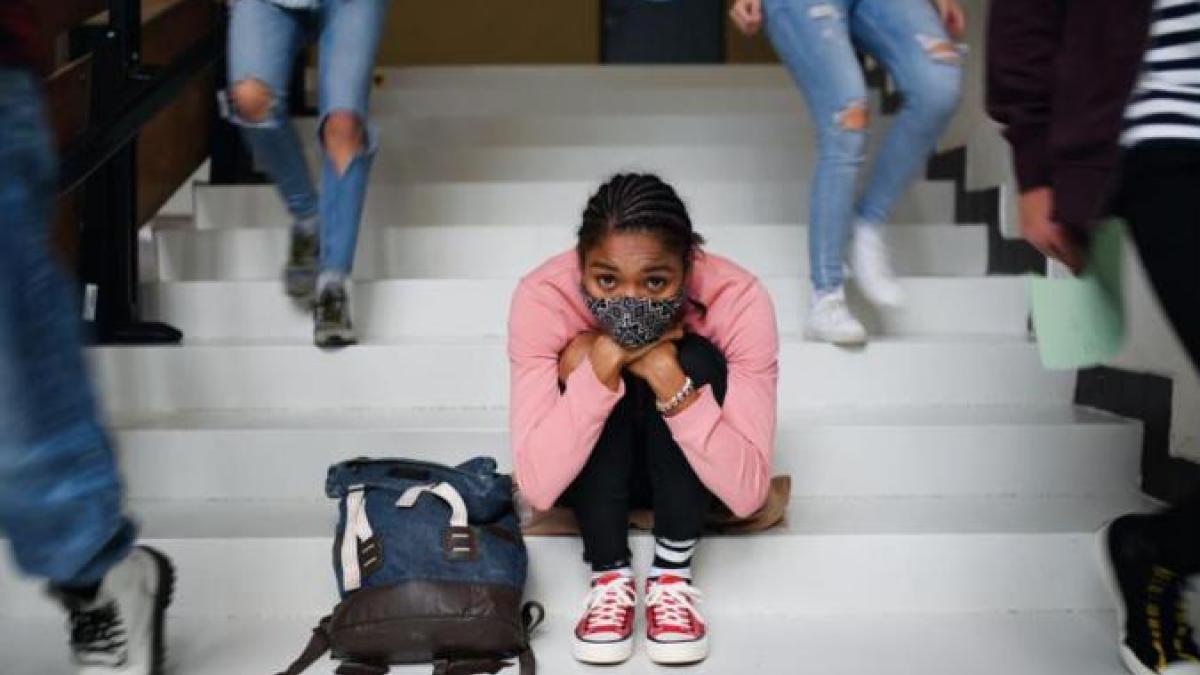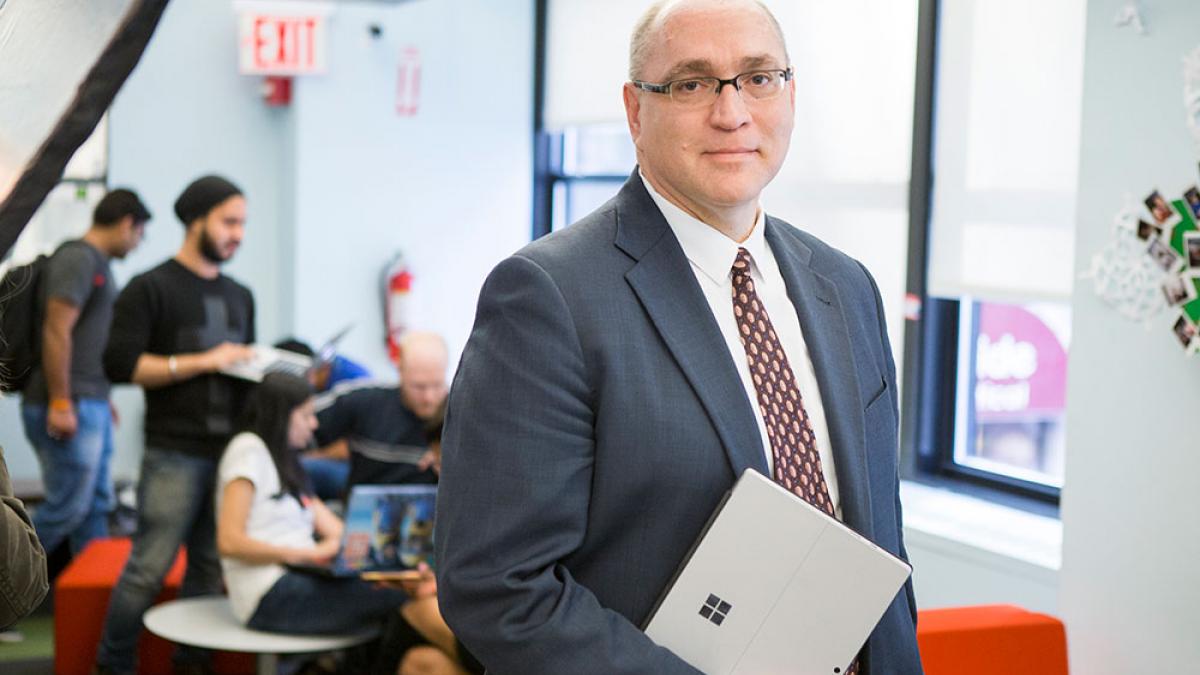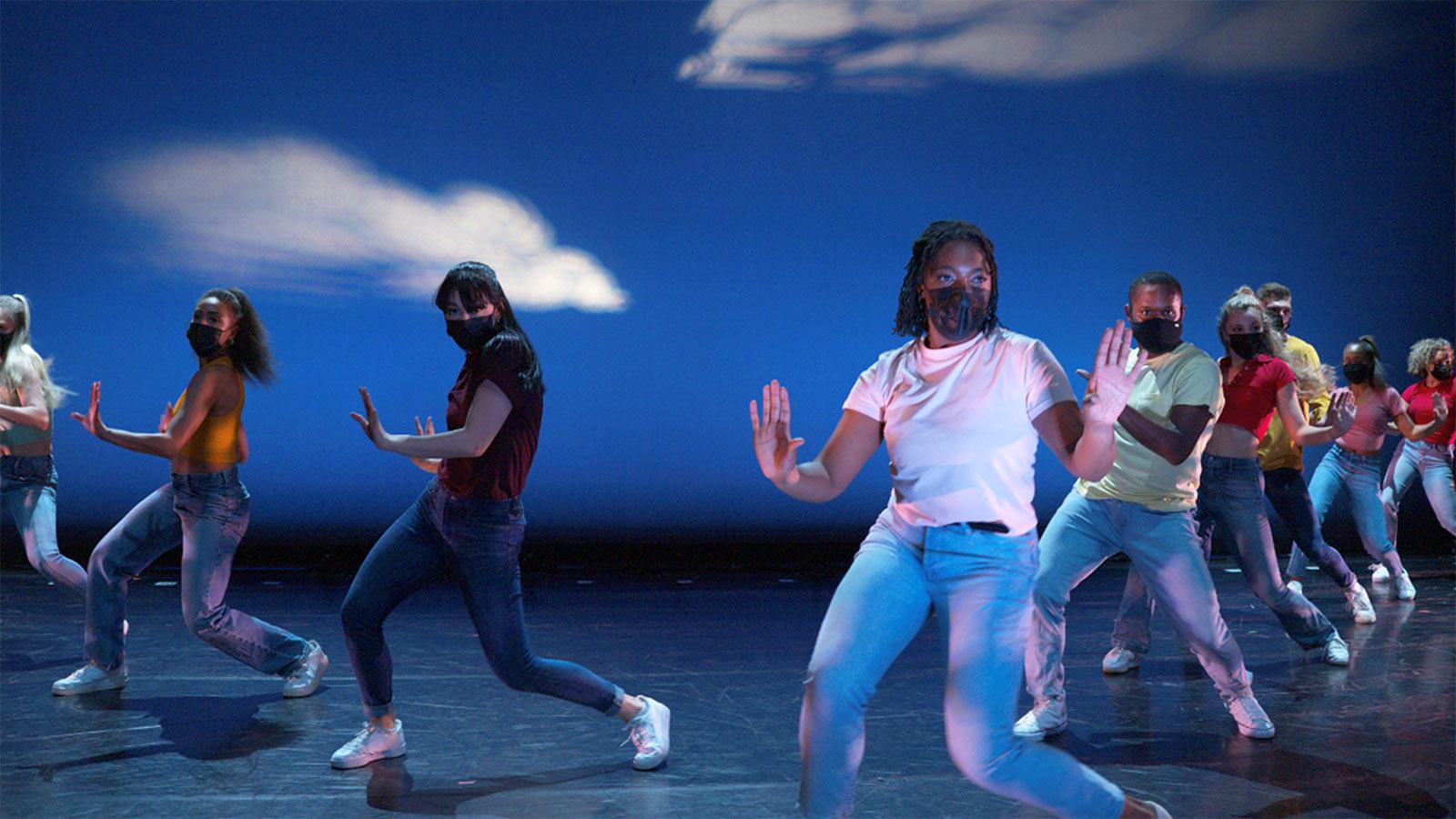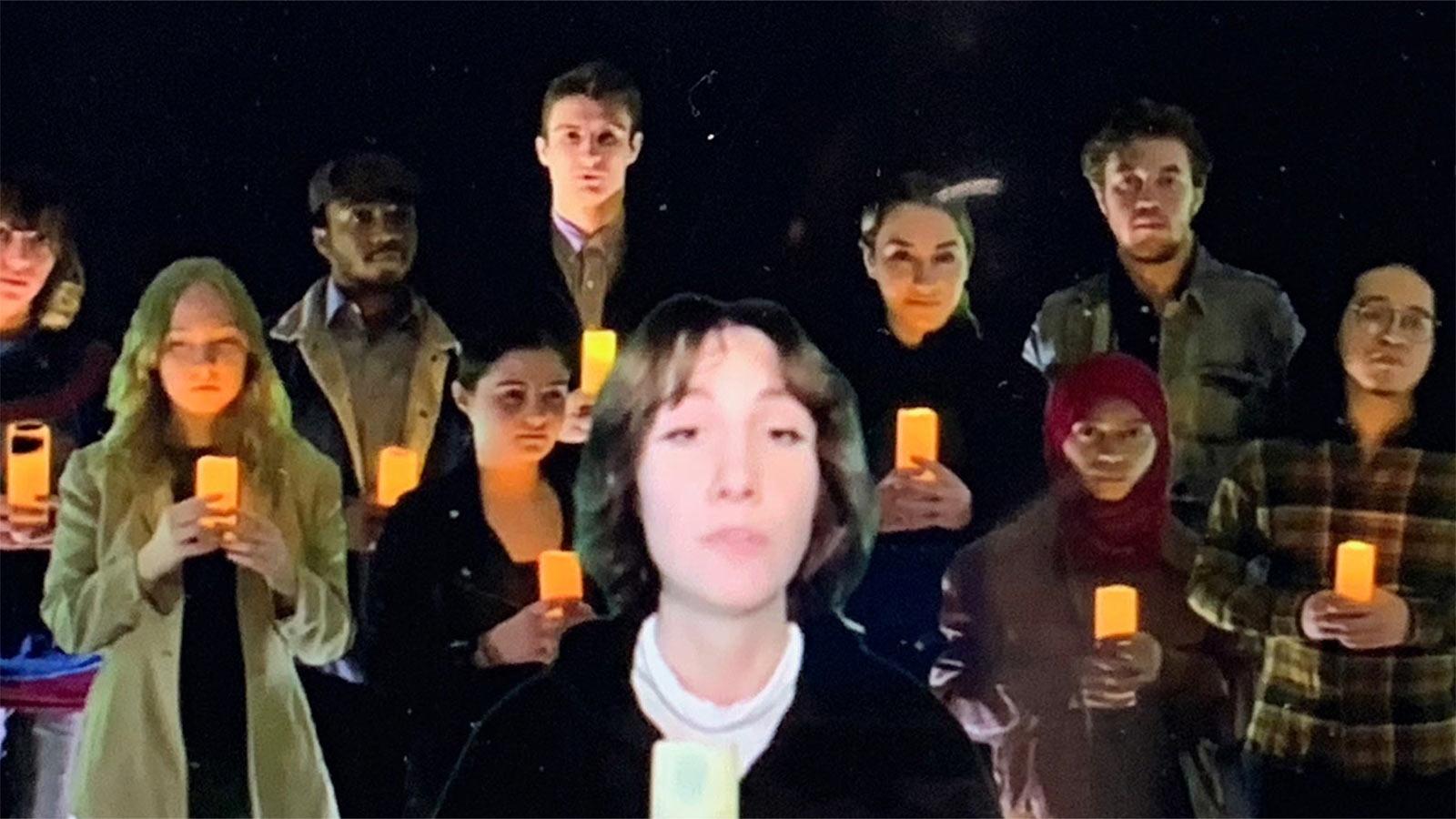Monster featured Dyson Professor Jennifer Magas in "10 things to do senior year of college to set yourself up for career success"
Avatars for OASIS
The School of Education has combined forces with Pace's OASIS program to get students on the autism spectrum career-ready by using virtual reality avatars to simulate a job interview scenario.


View the full issue of Pace Magazine.
“Eighty-five percent of graduates with autism nationally, are not gainfully employed within five years of graduation. Those are scary statistics,” says Jennifer Pankowski, EdD, a clinical assistant professor at Pace’s School of Education. “So, I thought we could use the avatars from the School of Ed to address some of hurdles that our OASIS students are facing.”
Designed for students with high-functioning autism spectrum disorders, learning differences, and nonverbal learning differences, Pace’s Ongoing Academic and Social Instructional Support (OASIS) program is one of the most comprehensive support programs in the country. The support OASIS offers students on the autism spectrum doesn’t stop at the classroom doors—it’s now branching out into the professional world.
“So, I was like, here's a wild idea: Can we try avatars?”
For Pankowski, her research into autism brought to light a pattern for folks on the autism spectrum. “What we were seeing was that they do really well in their coursework, they graduate, they graduate with a high GPA, you know, over 3.0,” she explains. “But they're not getting jobs.”
Through her work with kids and young adults on the autism spectrum, Pankowski knew that sometimes it was easier to connect with a non-intrusive, borderline humanistic situation. That’s where the use of immersive virtual reality avatars comes in.
“I started working with Anthony Martino, the Internship and Career Coordinator for the OASIS Program, who explicitly works with OASIS students. Career Services does a great job at coaching and other programs, but there was a disconnect here,” she says. “So, I was like, here's a wild idea: can we try avatars?”
Pankowski and Martino thought they would give it a try and start with the humanistic VR avatars and then work backwards to face-to-face human interaction, all the while preparing the OASIS students for landing a job after graduation.
“The avatars are basically computer-generated people in a virtual setting—in this case, an office—and they are operated by a real human, miles away,” explains Martino. “So, our students would enter the virtual job interview scenario and do a mock interview with the avatar.”
The mock-interview scenario is thought out to the very last detail—including being invited by a virtual assistant to wait in a virtual lobby until it’s time to go in to meet their virtual interviewer. The sessions are recorded and shared with the students after so that they can get a better sense of how well they did or the things that they need to improve for next time.
“Part of being a member of the Pace Community is getting ready for a career, landing an internship,” says Martino. “This is absolutely supporting that mission.”
“We asked the same questions that they asked in their mock interviews on campus, but with an avatar,” says Pankowski. “And all of a sudden, they came alive. Anthony couldn’t believe it.”
For her, it made perfect sense—an avatar is not threatening, it’s not a human who can stand up in front of a student and say, ‘How could you say that?’ The virtual distance created an opportunity for these students to really open up.
“Part of being a member of the Pace Community is getting ready for a career, landing an internship,” says Martino. “This is absolutely supporting that mission.”
In the interview scenarios, students were able to articulate their needs in the workplace. Students explained that they need clear expectations from their employers, expressed the need for straightforward directions and deadlines, and how they sometimes struggle when those instructions aren’t clear.
“The students are even doing things like self-advocating,” explains Pankowski. “They were saying, ‘Hey, I'm an asset to your company. These are the things that I need as an employee. And if you give these little things to me, I can do really well.’”
Zippia featured Seidenberg Professor and Associate Chair of Information Technology, Dr. Pauline Mosley in "EXPERTS WEIGH IN ON CURRENT JOB MARKET TRENDS"
The Show Goes On
In year where stage lights all across the world went dark, Pace’s School of Performing Arts found creative ways to keep the show going. Through virtual industry showcases, the actors, directors, and future show-business stars of tomorrow were able to showcase their talent to representatives from film, theater, and television through original performances that announced the Class of 2021 to the professional world.


View the full issue of Pace Magazine.
In year where stage lights all across the world went dark, Pace’s School of Performing Arts found creative ways to keep the show going. Through virtual industry showcases, the actors, directors, and future show-business stars of tomorrow were able to showcase their talent to representatives from film, theater, and television through original performances that announced the Class of 2021 to the professional world.
Perhaps one of the most inventive adjustments came from PPA’s Production and Design Showcase—the program created an interactive virtual experience that puts you right back at 140 William Street, even if you’re logging in from the other side of the world.
"The students of PPA, whose art form prides itself on the intimacy of its production, audiences, and performances, shifted in the paradigm and added new forms to how they told stories," said Pace School of Performing Arts Assistant Director of Finance and Facilities and Production Manager Laurie Brown Kindred, whose production expertise was instrumental in guiding PPA through these innovative showcases. "They used it as an opportunity to experiment and embrace the possibilities.”
While the live energy of in-person showcases were certainly missed, the incredible resiliency of our performing arts students demonstrate that no matter the obstacles in their way, Pace students simply go for it—a quality that has and will continue to pay dividends.
"PPA students did what artists have done for thousands of years—took what was in front of them, did what they needed to do, and created their own form of theater. While we know we would all rather not ever do another virtual production again, they ensured that the art of storytelling was never extinguished," said Kindred.
Pace Performing Arts in 2021
Forbes featured Pace President Marvin Krislov's latest piece : "I’m Worried About Student Mental Health Post-Pandemic—Here’s How We Can Help"

Three Executives Join Pace University’s Board Of Trustees
Three leaders with diverse backgrounds and a broad range of expertise in healthcare, technology, and business operations have joined Pace University’s Board of Trustees, the University today announced.
The new trustees are: Marki Flannery, former president and chief executive officer of the Visiting Nurse Service of New York; Christopher Roker MBA ’07, CEO and chief growth officer of NYC Health + Hospitals/Lincoln; and Hemant Khemka, managing director at Stesalit Group, a global technology and manufacturing group based in India.
Mark Besca, chair of Pace's Board of Trustees, said each new trustee brings a wealth of experience, professionalism, and energy — and all three are committed to Pace’s mission of Opportunitas, or creating opportunities for its diverse student body.
“Marki, Chris, and Hemant understand that a Pace education opens doors for our students and creates opportunities for them over the course of a career and a lifetime,” said Besca. “We welcome their broad range of experiences, and we are excited that their input and vision will help guide Pace students for generations to come.”
Flannery and Khemka, whose son is in the Pace Class of 2022, were elected to the board in March. Roker, an alumnus, was elected to the board in May.
The new trustees are joining the board at an exciting juncture at Pace University. Pace is in the midst of launching a new website and branding campaign; adding 12 new online graduate programs that align with growing market demands; remaining hyper-focused on experiential learning, career readiness, diversity and inclusion, and providing a strong return on investment to its students while investing significantly in its nationally acclaimed programs such as its School of Performing Arts, College of Health Professions, Seidenberg School of Computer Information Systems, and the Elisabeth Haub School of Law, which this year was ranked as the No. 1 environmental law program in the country.
Furthermore, Pace is transforming Lienhard Hall, home to its College of Health Professions on the Pleasantville campus, into a modernized Healthcare Hub that will add important programming for students preparing for careers in the region’s burgeoning healthcare and biotechnology sector.
Marki Flannery served as president and chief executive officer of the Visiting Nurse Service of New York (VNSNY). In this position, she oversaw the largest not-for-profit home- and community-based health care organization in the United States. With annual revenues of approximately $2.3 billion and over 10,000 employees, VNSNY serves the five boroughs of New York City, Nassau, Suffolk, and Westchester Counties, and parts of upstate New York. VNSNY typically has over 44,000 patients and members in its care, and offers a comprehensive array of programs and health plans designed to meet the diverse health care needs of their patients and members. Although she retired earlier this year, Flannery serves as an executive consultant to VNSNY’s CEO. She earned her bachelor’s and master’s degrees from New York University. Flannery is married, has two adult sons, and lives in Palisades, NY.
“I’ve always been so impressed by the students, graduates, staff and organization as a whole,” Flannery said. “I’m really excited to be joining the board and to make a meaningful contribution to Pace University.”
Hemant Khemka is the managing director at Stesalit Group, a global technology and manufacturing group based in India that focuses on making electronic and sensor based products in the areas of transportation and automation, AI solutions for Imagery Analytics and Dashboards for Internet of Things (IOT). Stesalit group includes companies such as Stesalit Systems, Stesalit Infotech and Stesalit Automation etc. As managing director, Khemka is responsible for strategic planning, product development, and marketing. In the future, the company expects to expand into more sensor-based products and solutions with a large focus on the internet of things – IOT. He previously worked for Credit Suisse in lower Manhattan, and holds a BBA from Adelphi University. He is a founding member of the Kolkata Chapter of the Entrepreneurs Organization and an active member of the Young Presidents’ Organization. He lives in Kolkata, India, with his wife. They have two children, including a son who is studying Computer Science at Pace University.
“I’m really excited to join Pace University’s Board of Trustees,” said Khemka. “I hope to help and contribute to the University’s overall vision and strategic direction. There is a lot we can do to position Pace as a global brand. We are positioned so beautifully in a location that is the envy of the world.”
Christopher Roker serves as CEO, NYC Health + Hospitals/Lincoln and as the health system’s Chief Growth Officer. He previously served as NYC Health + Hospitals/Queens and Metropolitan CEO. Under Roker’s leadership, the hospital has achieved an increase in patient satisfaction scores, inpatient discharges, outpatient volume, and operating room (OR) volume. He has also been credited for strengthening collaborations with physician, labor, and community partners. Prior to NYC Health + Hospitals, Roker held leadership positions at The MetroHealth System in Ohio, St. Barnabas Hospital in the Bronx, Beth Israel Medical Center in Manhattan, and The Parkway Hospital Queens. He holds a Bachelor of Arts from The State University of New York (SUNY) at Oswego, an MBA from Pace University, and a Certificate in Healthcare Leadership Advancement from Cornell University. He lives in Scarsdale, N.Y., with his wife, and they have a son.
“I know first-hand the power of education and the importance of Pace University’s mission of Opportunitas,” said Roker. “I’m excited to join the Board of Trustees and help make a significant contribution to the students we serve.”
About Pace University
Pace University has a proud history of preparing its diverse student body for a lifetime of professional success as a result of its unique program that combines rigorous academics and real-world experiences. Pace is ranked the #1 private, four-year college in the nation for upward economic mobility by Harvard University’s Opportunity Insights, evidence of the transformative education the University provides. From its beginnings as an accounting school in 1906, Pace has grown to three campuses, enrolling 13,000 students in bachelor’s, master’s, and doctoral programs in more than 150 majors and programs, across a range of disciplines: arts, sciences, business, health care, technology, law, education, and more. The university also has one of the most competitive performing arts programs in the country. Pace has a signature, newly renovated campus in New York City, located in the heart of vibrant Lower Manhattan, next to Wall Street and City Hall, and two campuses in Westchester County, New York: a 200-acre picturesque Pleasantville Campus and the Elisabeth Haub School of Law in White Plains.



